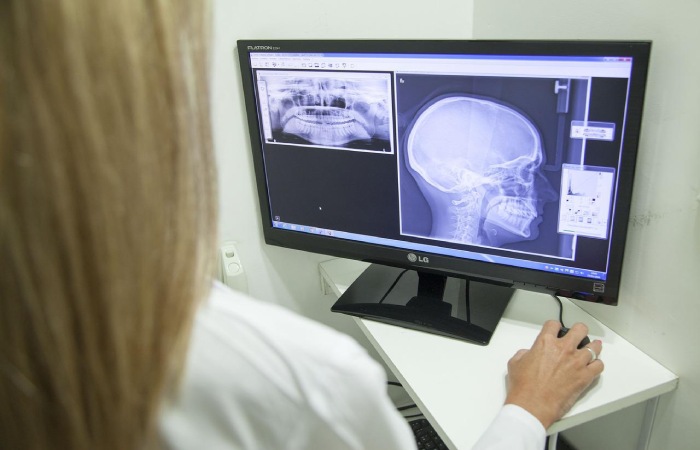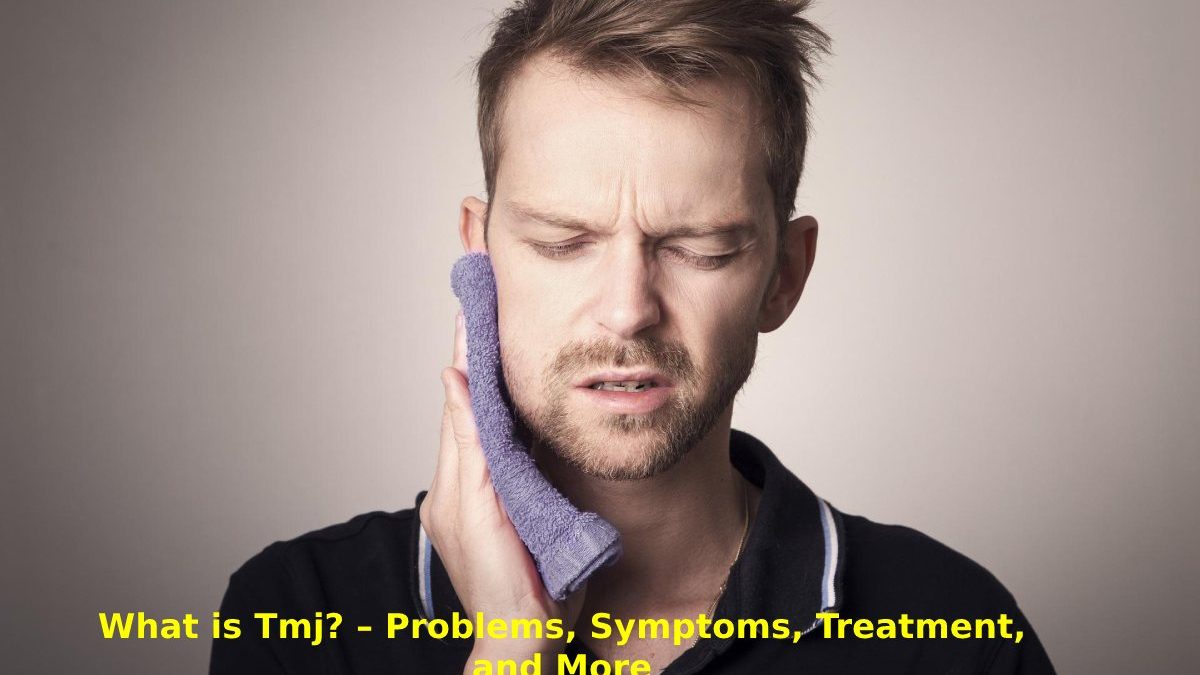The temporomandibular joint is usually known as the TMJ, but what is it? This joint is located at the base of the skull in front of the ear structure and connects the lower jaw to the upper jaw. Unlike most joints in the body, the TMJ has a unique design, consisting of a rounded protrusion of the jaw that fits into a notch in the skull and a disc made of soft bone called cartilage that sits between the two bones (articular disc).
These three parts of the TMJ are link together by ligaments that come from different parts of the head and neck to support the jaw and guide its movements. Many muscles are connected to these ligaments and several assist in the direction of the lower jaw.
Table of Contents
How does it Work?
The TMJ works in two ways for you to open your mouth. The first works as a hinge to open and close your mouth, just like a door hinge. The second is a gliding motion called translation, which moves your lower jaw down and forward. This movement helps the TMJ move back and forth and side to side for actions like eating, yawning, and singing, which are some of the most common.
What can Happen to the Tmj?
Like any other joint in the body, the TMJ can become fractured, swollen, and painful, limiting movement of the lower jaw and radiating pain to the head and neck area. Fractures of the articular disc itself are rare, but they can become dislocated, causing inflammation and deep pain. Like other joints such as the knees and hips, TMJ arthritis is rare and difficult to treat with anti-inflammatory medications alone. However, TMJ pain is usually temporary and can be treat with a combination of heat and cold to relieve sore ligaments and muscles around the joint.
What are the Main Problems Affecting Tmj?

After the numerous studies carried out in the best universities worldwide, three main problems trigger TMJ dysfunctions: bruxism, dental malocclusions (in most cases due to the absence of a tooth) and stress. Other less common issues, but which can also trigger TMJ problems, are related to the biomechanics of the body, and we detail them below:
- Malposition of the jaw and skull.
- Spine problems.
- cervical problems
- Malposition of suprahyoid and infrahyoid structures.
- Problems in the shoulders and the thoracic and lumbar spine.
What are the Most Frequent Symptoms?
Among the most frequent symptoms related to TMJ dysfunction, we can highlight the following:
- Pain in the area of the ears, very close to the joint.
- Headaches, including headaches and migraines.
- Pain during chewing.
- Jaw pain and locking.
- Pain in the oral area, usually when opening and closing the mouth, and in its lateral movements.
- Pain in the neck.
- Jaw clicking, locking or tightening.
Myofascial Muscle Pain
It usually presents unilateral or bilateral pain in the masticatory muscles and restricted jaw movement due to muscle spasms. In addition, the mouth must be able to open between 35 and 45 mm; often, the patient may have a closure block that does not allow him to open his mouth since the displaced meniscus makes mouth opening difficult; other times, there may be a dislocation as the displaced meniscus may prevent the condyle from returning to its position in the fossa.
How is Temporomandibular Joint Dysfunction Diagnose?
The masticatory system comprises the teeth, the jaw joint, and the masticatory muscles that work together to achieve proper chewing.
The stability of this system is delicate, and if any of its elements do not function correctly, the other two adapt to compensate for the deficit state. In case our body cannot adapt appropriately, a craniomandibular dysfunction originates.
How the teeth fit together is usually responsible for the appearance of this dysfunction. For example, a dental malocclusion can force the joint to move inadequately for chewing or cause teeth to grind at night.
How is TMJ Dysfunction Treated?
Depending on the diagnosis and the severity of the problem, the treatment will be different:
Hygienic-Dietary Measures
In some cases, dysfunctions can be solve with a series of tips and care that the patient can carry out. Such as knowing the joint movements that should be avoided.
Occlusal Splints
Most cases have an occlusal problem, so its correction would be carried out using splints that the patient would wear adjusted to his teeth. It fulfils the function of muscle relaxation and mandibular repositioning. They are use at night.
Surgical Processes
The blockage of the TMJ, in many cases, is solve with a pretty simple intrusion called arthrocentesis.
A surgical approach to the joint through arthroscopy may be necessary for some patients with complex problems. For example, this technique is indicate when the patient has limited mouth opening and pain that does not subside with analgesics or a discharge splint. Through a camera insert into the joint, the different parts that make it up are observe. If there is any alteration that may cause discomfort, correct them appropriately.
Conclusion
Many TMJ problems are cause by the effects of physical stress or tooth grinding. And in the vast popularity of cases, TMJ disorders are related to poor tooth function (malocclusion). A set of anatomical structures forms the temporomandibular joint. It allows the jaw to perform movements applied to the chewing process.
Also Read: Ayurveda Treatment for Back Pain

